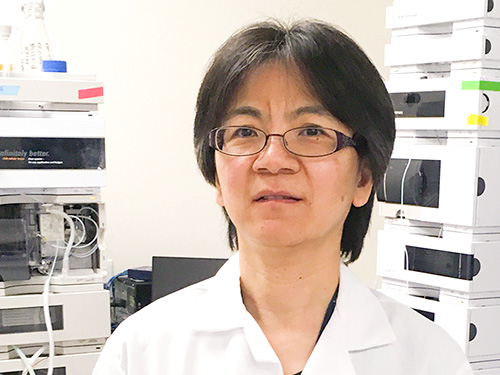Featured Customer: Li Zhu, Ph.D.

Since SEC-MALS is one of the primary means to characterize PEGylated proteins, the need to analyze these biopharmaceuticals is often the gateway to MALS and subsequently applying it to a larger range of samples. This was the path followed by Li Zhu, whose passion for developing analytical methods has contributed greatly to Halozyme’s pipeline of cancer therapeutics.
Please tell us about your background and current position.
I grew up in Changchun, Jilin Provence in mainland China and studied Chemistry at Jilin University, earning a Master’s degree in Chemistry in 1995. Thereafter, I received another Master’s degree in Chemical Engineering from McMaster University (Ontario, Canada) in 2000. Currently, I am a Sr. Research Scientist at Halozyme Therapeutics, Inc.
What are the challenges that excite you and led you to become an analytical chemist?
Quality is the most important thing to any product development, but especially so in the biopharmaceutical industry. As an Analytical Chemist, it is my responsibility to ensure accurate and precise analytical results that are critical to the development of our oncology drug products. The challenge of developing a suitable method to analyze and/or characterize a complicated molecule is what excites me the most.
What has been the arc of your career path?
Before joining Halozyme, I worked for a variety of companies in the chemical and biopharmaceutical industries. My work experience with analytical method development and validation, method transfer, and working knowledge of cGMP and ICH guidelines made me suitable for working for Halozyme.
I have been with Halozyme for over 10 years now. My responsibilities include developing and validating analytical test methods, overseeing analytical method transfer to contract research organizations, performing drug stability studies, writing study protocols and reports, and characterizing drug molecules using high performance liquid chromatography (HPLC), mass spectrometry (MS) and multi-angle-light-scattering (MALS).
In what context did you first learn about light scattering and Wyatt instruments?
Halozyme is a clinical-stage biotechnology company focused on developing and commercializing novel cancer therapies that target the tumor microenvironment. Our lead proprietary program is the investigational drug, pegvorhyaluronidase alfa (PEGPH20).
Two primary properties of pegvorhyaluronidase alfa are its molecular weight distribution and the PEG:protein molar ratio. In 2008, Michelle Chen from Wyatt introduced us to Wyatt’s 3-angle miniDAWN® light scattering instrument. She brought a demo instrument to Halozyme and demonstrated how the miniDAWN can help us characterize PEGPH20.
How has MALS contributed to your research and development studies?
At Halozyme we have used our miniDAWN to characterize both recombinant human PH20 (rHuPH20) and pegvorhyaluronidase alfa. For rHuPH20, which is the non-PEGylated protein, SEC-MALS provided information about protein molecular weight and high molecular weight aggregates (HMW); while for pegvorhyaluronidase alfa (the PEGylated protein), SEC-MALS was used for characterization of different PEGmers, and for PEG:protein molar ratio testing.
We recently added a new 18-angle DAWN® instrument to our lab. We use it for molecular weight determination and conformational analysis of hyaluronic acid.
They say you can’t put a round peg in a square hole, but we know that SEC-MALS will tell you if your PEG and protein fit together! Many thanks to Ms. Zhu for her kind words, and as always our fingers are crossed for culmination of her efforts in successful tumor-targeting therapies.

“Wyatt’s technical support team is the best! They are a group of the most knowledgeable experts, and are always there to help.”
